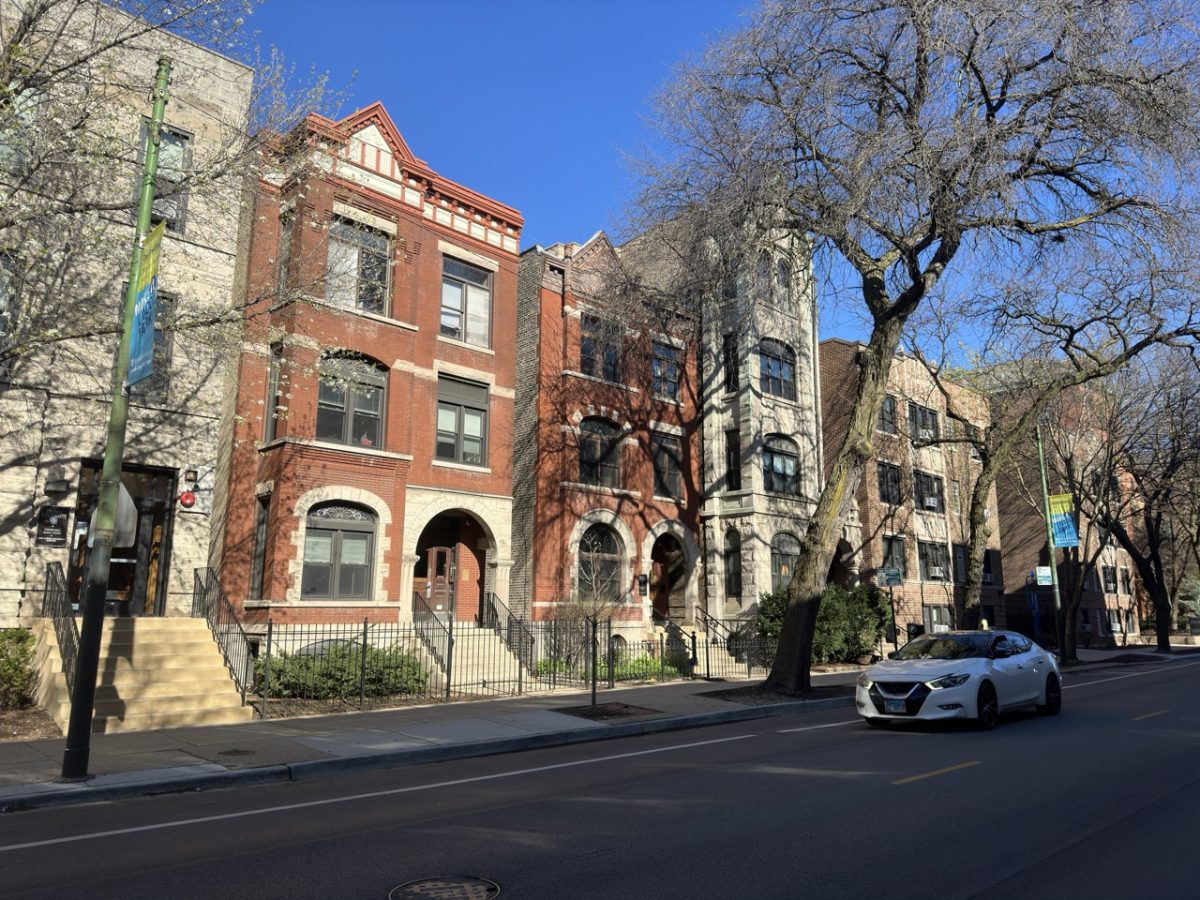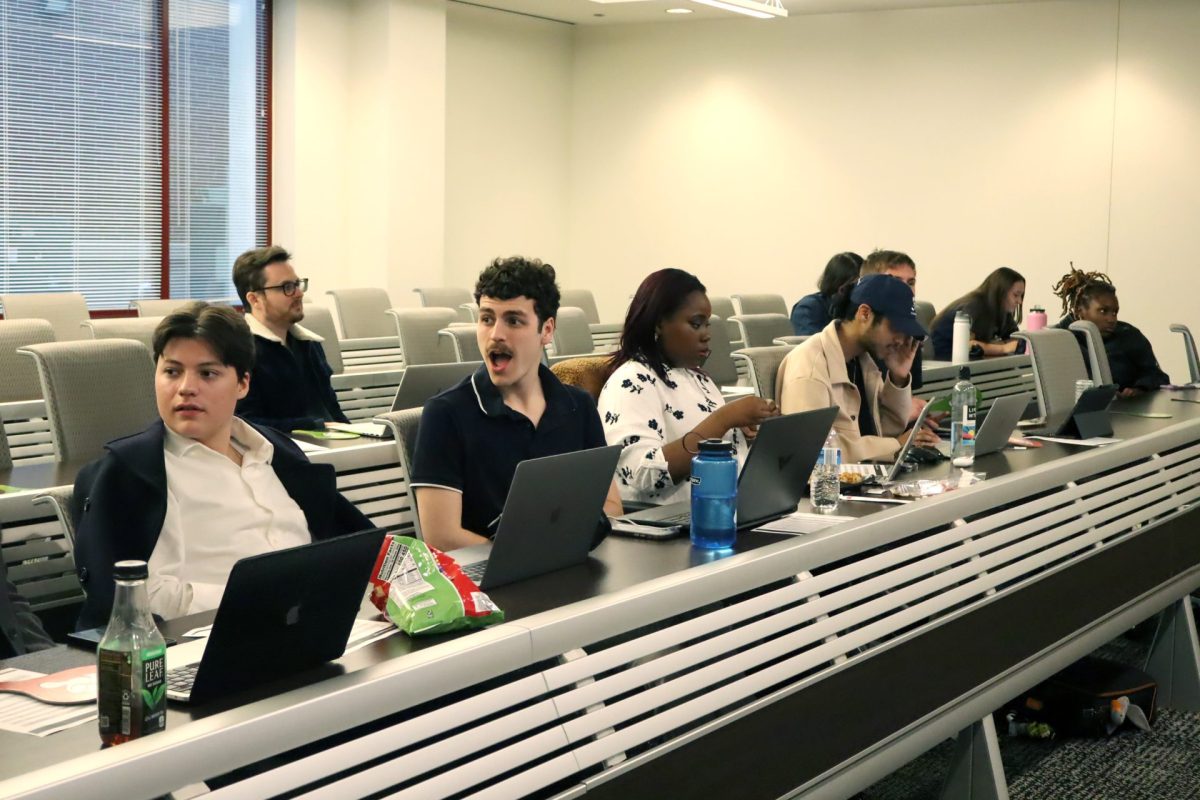To think, DePaul was once known as “the little school under the L.” Now, the university is planning on switching athletic conferences and building a state-of-the-art arena.
As reported for the last month, DePaul and six other Big East schools will split off to form their own conference in the very near future. The new conference, right now being dubbed the “Catholic Seven,” will not be focused on football, which has been the big money sport in collegiate athletics.
“It will be comprised of institutions that are like-minded,” said DePaul athletic director Jean Lenti-Ponsetto. “[That] doesn’t necessarily mean they’ll all be Catholic institutions, but it means they’ll all be institutions whose probably primary revenue-driven sport will be men’s and women’s basketball.”
During the monthly forum at the Sullivan Athletic Center in front of Blue Demon coaches, athletic department employees and around 15 student organization leaders, Ponsetto talked about some of the major news items involving the school.
Once a stable college conference, the Big East has essentially installed a revolving door. Not taking into account the Catholic Seven, four core schools (Pittsburgh, Syracuse, Rutgers and Notre Dame) will bolt this year or next while nine other schools will join in some capacity in roughly the same time frame.
“My own personal feeling is that our presidents were getting a little conference expansion fatigue,” said Ponsetto, adding that many of these schools are good additions to the Big East from the football side, but not when it comes to basketball.
The Catholic Seven are seeking to form their own conference possibly later this year but most likely next year, and additional details are still being negotiated. The new group might keep the “Big East” name, other outside basketball-centric schools (like Xavier, Butler and Gonzaga) may join to round out to 10 or 12 teams, and the Catholic Seven representatives are working on a 12-year, $500 million television deal with Fox.
Though the focus will be on basketball, other DePaul sports will not get the shaft when it comes to a new conference.
“Financially it won’t have any impact at all on our operating budget, or our scholarships or anything like that,” said Ponsetto. “It will all pretty much stay the same. I think that’s one of the nice things about this group.”
In addition to the realignment, the new DePaul basketball arena was discussed at the forum. DePaul is seeking to move out of the Allstate Arena, where they have played since 1980. The two most likely options are for the school to build its own arena, or to become a tenant at the United Center.
The United Center became an intriguing option in November, when it was reported that the UC would offer the school 10 years free rent, along with a number of other caveats including the use of the Bulls locker room, a court design, banner space in the rafters, and the construction of an in-arena DePaul store. Scheduling is one of the main issues with this plan, as the Bulls and Blackhawks each host 41 games apiece at the venue every year. DePaul might not get the choice of home dates.
The ideal option for DePaul is its own arena. The proposed building would host all of the men’s basketball games and at least half of the women’s games. It would also be used for graduation, concerts and other events.
“We’re also looking for a building that will have DePaul’s name on it,” said Ponsetto, “and be approximate for students to be able to get to.”
About that: a Lincoln Park arena is just about out of the question now. The school and an outside company performed a feasibility study to see if a near-campus venue would work, and such a location does not exist. In addition to finding the space to build an arena, the school also needs to find the area that can hold a large amount of parking (the venue will hold at least 10,000 fans).
Instead, the arena will most likely be in the South Loop, near McCormick Place. While that location is not particularly near the Loop campus, a new Green Line stop at Cermak Road will service fans heading to the proposed arena.
As is fairly obvious, constructing a 10,000 seat arena is not cheap, with estimates ranging from $150 million to $250 million. But students need not worry about any increases in tuition costs or decreases in financial aid.
“If the university decides to go down this path,” said Ponsetto, “there will be some fundraising that will be done for this facility, and the new conference that we’re about to embark on is going to be financially a little bit more lucrative than the situation we currently have.
“Any increase in the athletic department budget would be offset by additional revenue dollars that would be created by the athletic department,” said Ponsetto.
Also, the new arena is not contingent on the creation of a new conference. Ponsetto said DePaul would receive an uptick in TV money anyway if they were to remain in the Big East.
DePaul is envisioning big changes towards the end of the decade, perhaps reinventing the school’s entire image. They could have a new arena, a new conference and a new brand.
The little school will soon be big-time in athletics.







